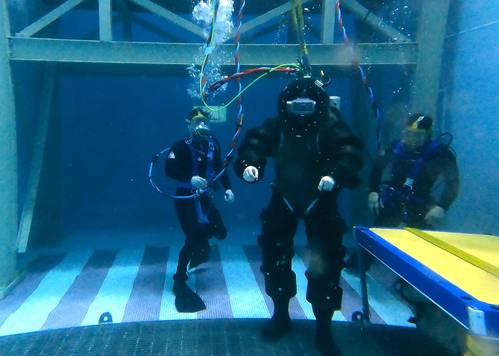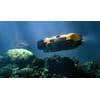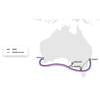US Navy Tests Flexible One-Atmosphere Diving Suit
The US Navy has tested the capabilities of the Deep Sea Expeditionary with No Decompression (DSEND) system, which includes a hardened yet lightweight atmospheric dive suit featuring rotating, detachable joints allowing for greater dexterity, flexibility and maneuverability.
Sponsored by the Office of Naval Research (ONR) — in partnership with Naval Sea Systems Command (NAVSEA), Naval Undersea Warfare Center (NUWC) and Naval Surface Warfare Center (NSWC) Panama City — DSEND recently underwent demonstrations at NSWC Carderock Division in Maryland and at the Navy Experimental Diving Unit in Florida.
Although constructed from hard, durable material, DSEND is lightweight and enables users to swim and walk on the bottom easily. This improves on atmospheric diving suits traditionally used by the Navy in the past, which were more rigid and powered by attached thrusters, making it difficult to move around.
The suit also is easier to don and remove and can be adjusted to diver size. In addition, DSEND features joints, grippers and hand attachments made from novel materials that are strong, lightweight and mirror the natural movements of human joints, reducing diver fatigue.
Navy diving missions include deep ocean salvage of vessels and aircraft, underwater rescues, explosive ordnance disposal, ship hull maintenance and recovery of sunken equipment.
The deeper divers descend, however, the greater the danger from increasing water pressure. In deep-water situations, Navy divers use a saturation system, or diving bell, that is pressurized with gas so the pressure inside the bell matches outside pressure.
The drawback is that, when returning to the surface, divers must ascend slowly and stop at intervals so they don’t suffer decompression sickness. This is a potentially lethal condition in which the inert gas dissolved in the blood and tissues by high pressure forms bubbles as pressure decreases.
DSEND’s one-atmosphere environment presents a solution to this challenge. Equipped with a self-contained life support system, the DSEND suit encloses a diver in a stabilized pressure cocoon during the entire dive. The diver can work at great depths for many hours and ascend without the drawn-out process of decompression.
During the Maryland and Florida demos, DSEND divers completed various exercises, including pulling a mannequin from an aircraft fuselage, rigging a piece of wreckage for salvage and traversing makeshift tunnels representing sunken vessels.
At-sea demonstrations are expected within a year.

















 December 2025
December 2025



